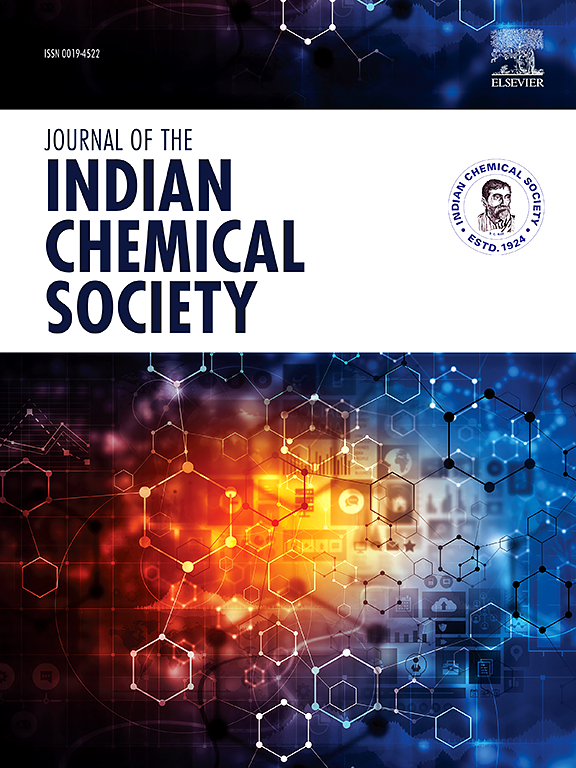Insight into the chemical tailoring of nanotube and its metal-doped derivatives for fuel oil desulfurization: First-principles studies
IF 3.2
4区 化学
Q2 CHEMISTRY, MULTIDISCIPLINARY
引用次数: 0
Abstract
Research proves that dibenzothiophene (DBT) is a contaminant which is a challenge in the petroleum industry, human health, and water pollution. It is imperative to proffer a solution to mitigate the existence of polluted compounds such as DBT, hence, Aluminium nitride nanotube (AlNNT) was modified with transition metals such as Iridium (Ir), Osmium (Os), Platinum (Pt), and Rhenium (Re) to ascertain possible sensitivity and adsorption strength against DBT. This study was achieved via the computational density functional theory (DFT) method, calculated PBE0-D3/def2svp level of theory. From the findings, Re@AlNNT (−0.735 eV), Pt@AlNNT (−1.287 eV), Os@AlNNT (−1.283 eV), and Ir@AlNNT (−1.340 eV) show a weak and moderate chemisorption characterization toward DBT interaction. The electronic study via the HOMO-LUMO relationship also shows a change in the energy gap of the modified AlNNT after interacting with DBT. In the pure state, AlNNT possesses an energy of 5.130 eV but after modification; Ir@AlNNT (3.071 eV), Os@AlNNT (2.223 eV), Pt@AlNNT (2.400 eV), and Re@AlNNT (5.932 eV) was observed, while 3.165 eV, 2.770 eV, 2.654 eV, and 2.359 eV values were seen after DBT interaction respectively. The examined nanotube could be a good agent in the development of DBT sensor materials.

洞察纳米管及其金属掺杂衍生物的化学剪裁用于燃油脱硫:第一性原理研究
研究证明,二苯并噻吩(DBT)是一种对石油工业、人类健康和水污染构成挑战的污染物。因此,采用过渡金属如铱(Ir)、锇(Os)、铂(Pt)和铼(Re)对氮化铝纳米管(AlNNT)进行改性,以确定其对DBT的敏感性和吸附强度。本研究通过计算密度泛函理论(DFT)方法实现,计算出PBE0-D3/def2svp的理论水平。结果表明,Re@AlNNT(−0.735 eV)、Pt@AlNNT(−1.287 eV)、Os@AlNNT(−1.283 eV)和Ir@AlNNT(−1.340 eV)对DBT相互作用表现出弱和中等的化学吸附特征。通过HOMO-LUMO关系进行的电子研究也显示了修饰后的AlNNT与DBT相互作用后能隙的变化。纯态下,AlNNT的能量为5.130 eV,但经过修饰后;DBT作用后的值分别为Ir@AlNNT (3.071 eV)、Os@AlNNT (2.223 eV)、Pt@AlNNT (2.400 eV)和Re@AlNNT (5.932 eV),分别为3.165 eV、2.770 eV、2.654 eV和2.359 eV。所研究的纳米管在DBT传感器材料的开发中具有良好的应用前景。
本文章由计算机程序翻译,如有差异,请以英文原文为准。
求助全文
约1分钟内获得全文
求助全文
来源期刊
CiteScore
3.50
自引率
7.70%
发文量
492
审稿时长
3-8 weeks
期刊介绍:
The Journal of the Indian Chemical Society publishes original, fundamental, theorical, experimental research work of highest quality in all areas of chemistry, biochemistry, medicinal chemistry, electrochemistry, agrochemistry, chemical engineering and technology, food chemistry, environmental chemistry, etc.

 求助内容:
求助内容: 应助结果提醒方式:
应助结果提醒方式:


